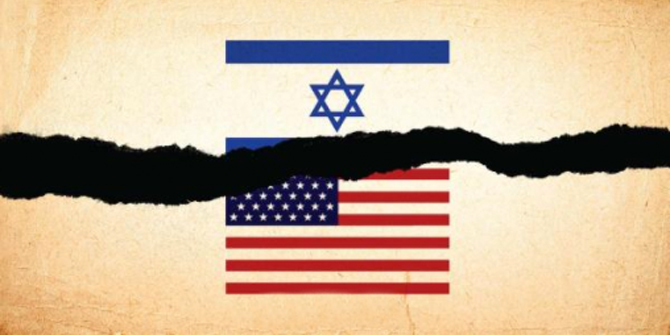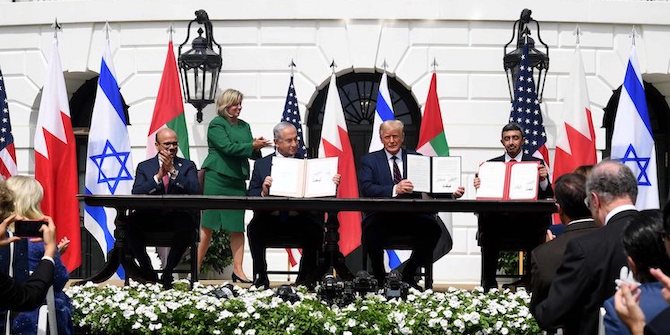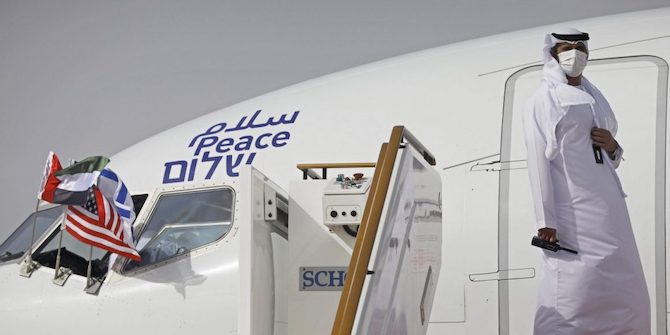by Avraham Spraragen

Despite the unprecedented double set of Knesset elections in 2019, Jerusalem remains in political limbo. Former Israel Defense Forces Chief of Staff Benny Gantz’s Blue & White party sought to overtake incumbent Israeli Prime Minister Benjamin Netanyahu’s Likud party to no avail. In the April election, each party won 35 of 120 parliamentary seats while in September, Gantz’s party narrowly edged out Netanyahu’s, with the former winning 33 seats and the latter 32. The April and September coalition-building cycles saw the leaders of the two largest Knesset parties fail to form the necessary 61-seat majority to govern. Months later, Gantz and Netanyahu are still at loggerheads and the composition of the next Israeli government continues to be uncertain. Hence, much to the chagrin of the electorate, Israel now faces yet another round of elections in March 2020.
Amid this domestic political chaos, the persisting strife between Israel and its Palestinian neighbours looms large. A negotiated resolution of the decades-long conflict has eluded veteran diplomats since the inception of the peace process at the 1991 Madrid Conference. The prospect of peace for the foreseeable future is grim. Indeed, the deterioration of Israeli-Palestinian relations and pitiful mediation efforts of the current US administration provide little room for optimism. However, in this cacophony of political noise, the language of peace can in fact be heard.
The Blue & White party, named after Israel’s national colours, is a recently-formed political alliance that has now twice run on the platform of initiating a ‘regional conference,’ in the mould of the proposed 2002 Arab Peace Initiative for Israeli integration into the region, and of deepening the ‘process of separation from the Palestinians,’ a variation on the long-standing, international consensus formulation of two states for two peoples. Furthermore, the retired lieutenant-general at the helm of this plan to rekindle the peace process was given a vote of confidence by no less than legendary Israeli novelist and stalwart champion of peace, Amos Oz.
A co-founder of the preeminent Israeli peace movement Peace Now, Oz said that ‘a good leader must understand human nature, read the map, have courage and compassion. That’s Gantz.’ Last month, in a commemorative statement for the anniversary of Oz’s passing, Gantz expressed a mutual affection for Oz, writing of his immense stature and love of his country. Crucially, while Gantz and Oz would likely have disagreed on the parameters of an Israeli-Palestinian final status agreement, the late novelist recognised that the former IDF chief of staff is at least a willing partner for peace.
Upon receiving a mandate from Israeli President Reuven Rivlin to form the next government, Gantz lent credence to Oz’s claim in his remarks from Beit HaNassi, Jerusalem, the official presidential residence; the Blue & White party leader committed to the formation of a government that will ‘aim for peace.’ Another glimmer of hope came in the form of an olive branch, extended by Gantz to Arab-Israeli Knesset member and Joint List party leader Ayman Odeh. In a 28 October speech, Odeh called on Gantz to ‘be brave like Rabin was in 1993 … and it will be my honor to be brave’ – a reference to the late Israeli PM Yitzhak Rabin who courageously signed the 1993–95 Oslo Accords with then-Palestine Liberation Organisation Chairman Yasser Arafat.
Three days later, Gantz heeded Odeh’s call, inviting Odeh for a meeting to discuss the possibility of forming a Joint List-backed government (the first coalition talks between a prime ministerial candidate and an Arab-Israeli Knesset member since 1999). This hopeful show of Arab-Jewish unity culminated in a historic speech delivered by Gantz at a 2 November memorial rally for PM Rabin who was assassinated 24 years ago. The rally was held in Rabin Square, Tel Aviv under the PM’s famous banner, ‘yes to peace, no to violence.’ Having previously stated on the campaign trail that ‘to be compared with Rabin is nothing short of one of best compliments I can think of,’ Gantz invoked the slain leader before a crowd of thousands when he proclaimed that ‘today we are embarking on the most important battle – the battle for peace.’
In spite of recent political woes, this battle did not end with Gantz’s November proclamation. It will continue into the third Israeli election and beyond, so long as voters hearken Amos Oz’s five immortal words: ‘Let us strive for peace!’






